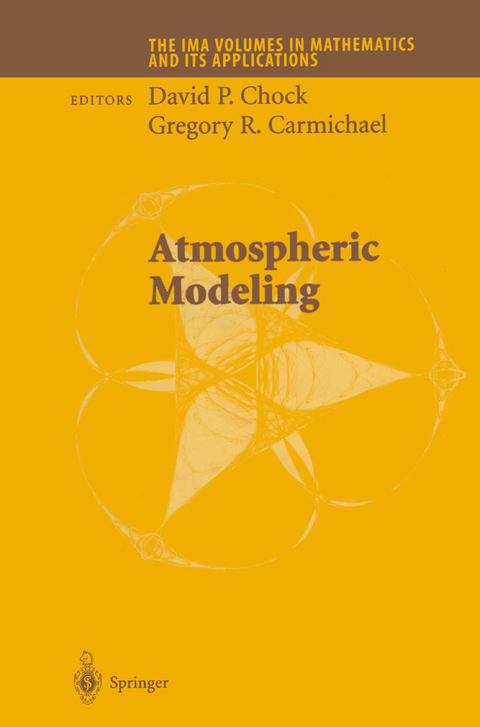
Atmospheric Modeling
Springer-Verlag New York Inc.
978-0-387-95497-4 (ISBN)
This volume contains refereed papers submitted by international experts who participated in the Atmospheric Modeling workshop March 15 -19, 2000 at the Institute for Mathematics and Its Applications (IMA) at the University of Minnesota. The papers cover a wide range of topics presented in the workshop. In particular, mathematical topics include a performance comparison of operator-splitting and non- splitting methods, time-stepping methods to preserve positivity and consideration of multiple timescale issues in the modeling of atmospheric chemistry, a fully 3D adaptive-grid method, impact of rid resolution on model predictions, testing the robustness of different flow fields, modeling and numerical methods in four-dimensional variational data assimilation, and parallel computing. Modeling topics include the development of an efficient self-contained global circulation-chemistry-transport model and its applications, the development of a modal aerosol model, and the modeling of the emissions and chemistry of monoterpenes that lead to the formation of secondary organic aerosols. The volume provides an excellent cross section of current research activities in atmospheric modeling.
Solving vertical transport and chemistry in air pollution models.- Time-stepping methods that favor positivity for atmospheric chemistry modeling.- Some aspects of multi-timescales issues for the numerical modeling of atmospheric chemistry.- Resolution of pollutant concentrations using a fully 3D adaptive method.- Effect of grid resolution and subgrid assumptions on the model prediction of non-homogeneous atmospheric chemistry.- Numerical solution of trace species advection under non-uniform density distribution: experiment with two-dimensional linear flows.- Coupled transport-chemistry computations in 4D-var data assimilation for air pollution models.- 4D-var data assimilation and its numerical implications for case study analyses.- Running a large-scale air pollution model on fast supercomputers.- An efficient 3-D model for global circulation, transport and chemistry.- Development of a global-through-urban scale nested and coupled air pollution and weather forecast model and application to the SARMAP field campaign.- Modeling atmospheric particulate matter in an air quality modeling system using a modal method.- Modeling emissions and chemistry of monoterpenes for regional models.- List of workshop participants.
| Reihe/Serie | The IMA Volumes in Mathematics and its Applications ; 130 |
|---|---|
| Zusatzinfo | XII, 336 p. |
| Verlagsort | New York, NY |
| Sprache | englisch |
| Maße | 156 x 234 mm |
| Themenwelt | Mathematik / Informatik ► Mathematik ► Angewandte Mathematik |
| Naturwissenschaften ► Chemie ► Physikalische Chemie | |
| Naturwissenschaften ► Geowissenschaften ► Meteorologie / Klimatologie | |
| ISBN-10 | 0-387-95497-X / 038795497X |
| ISBN-13 | 978-0-387-95497-4 / 9780387954974 |
| Zustand | Neuware |
| Haben Sie eine Frage zum Produkt? |
aus dem Bereich


